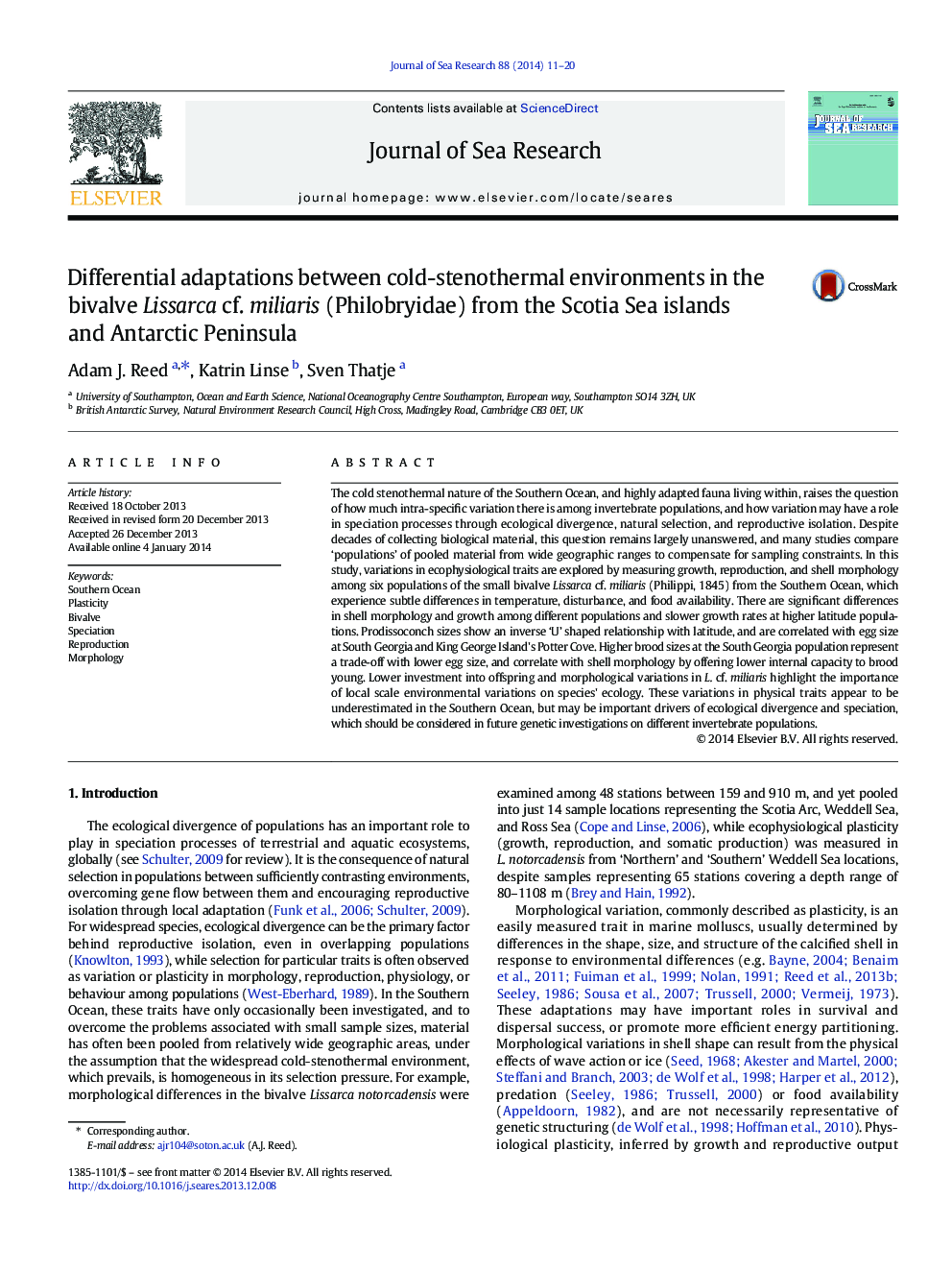| کد مقاله | کد نشریه | سال انتشار | مقاله انگلیسی | نسخه تمام متن |
|---|---|---|---|---|
| 6387333 | 1627486 | 2014 | 10 صفحه PDF | دانلود رایگان |

- Our study explores Southern Ocean plasticity and its role in ecological divergence.
- There are variations in bivalve morphology and maximum size among populations.
- Slower growth rates with increasing latitude linked to lower temperatures.
- Egg/larval size and number show trade-offs and relationship with latitude.
- We provide evidence for ecological divergence for future molecular investigations.
The cold stenothermal nature of the Southern Ocean, and highly adapted fauna living within, raises the question of how much intra-specific variation there is among invertebrate populations, and how variation may have a role in speciation processes through ecological divergence, natural selection, and reproductive isolation. Despite decades of collecting biological material, this question remains largely unanswered, and many studies compare 'populations' of pooled material from wide geographic ranges to compensate for sampling constraints. In this study, variations in ecophysiological traits are explored by measuring growth, reproduction, and shell morphology among six populations of the small bivalve Lissarca cf. miliaris (Philippi, 1845) from the Southern Ocean, which experience subtle differences in temperature, disturbance, and food availability. There are significant differences in shell morphology and growth among different populations and slower growth rates at higher latitude populations. Prodissoconch sizes show an inverse 'U' shaped relationship with latitude, and are correlated with egg size at South Georgia and King George Island's Potter Cove. Higher brood sizes at the South Georgia population represent a trade-off with lower egg size, and correlate with shell morphology by offering lower internal capacity to brood young. Lower investment into offspring and morphological variations in L. cf. miliaris highlight the importance of local scale environmental variations on species' ecology. These variations in physical traits appear to be underestimated in the Southern Ocean, but may be important drivers of ecological divergence and speciation, which should be considered in future genetic investigations on different invertebrate populations.
Journal: Journal of Sea Research - Volume 88, April 2014, Pages 11-20